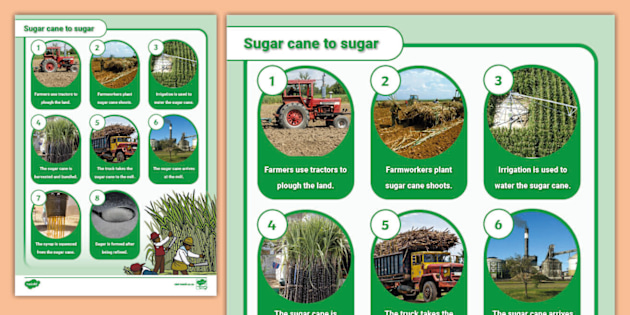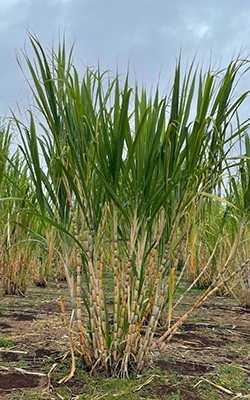All About Sugar Canes: What Are Sugar Canes Made Use Of For and Their Role in Global Farming?
Sugar canes function as a keystone of international farming, primarily recognized for their function in sugar manufacturing. They additionally add to the production of byproducts like molasses and ethanol. These elements not just sustain various markets however also effect economic security in rural areas. The farming of sugar walking sticks faces substantial environmental challenges. Recognizing their multifaceted function triggers more expedition into their farming methods and sustainability efforts.
The Agricultural Refine of Sugar Cane Cultivation
Although sugar cane farming may vary by area, the fundamental agricultural process stays regular. The very first action involves picking high-yielding varieties ideal for regional environments. Prep work of the dirt is crucial, frequently calling for tillage and the addition of fertilizers to boost fertility. Growing generally happens throughout the stormy season, with farmers using either entire stalks or cuttings to develop new crops.As the plants expand, they require thorough care, consisting of weed control, pest management, and watering, relying on the ecological conditions. Farmers check the sugar cane's growth cycle, which usually covers 10 to 24 months, before collecting. Harvesting is labor-intensive, often performed manually or with specialized equipment, making sure minimal damages to the stalks. Complying with harvest, the cane is delivered to refining centers. This precise cultivation procedure not just sustains neighborhood economies but additionally plays a substantial duty in global farming techniques, adding to food and energy products.
Sugar Production: From Walking Stick to Crystal
The journey of sugar manufacturing begins the moment fresh collected sugar walking stick gets here at refining facilities. The very first step entails chopping the cane and washing to prepare it for extraction. Using high-pressure rollers, the juice is drawn out from the crushed walking cane, resulting in a pleasant liquid referred to as sugarcane juice. This juice goes through information, where impurities are gotten rid of via the enhancement of lime and heat.Next, the clarified juice is focused by steaming it to create a thick syrup. This syrup is after that taken shape by cooling down, allowing sugar crystals to create. The taken shape sugar is divided from the continuing to be syrup, referred to as molasses, through centrifugation.Finally, the sugar crystals are cleaned and dried out, leading to the acquainted granulated sugar (What Are Sugar Canes Used For). This procedure transforms raw sugar walking cane into a product that is indispensable to various culinary and commercial applications, highlighting the relevance of sugar in worldwide farming
Biofuels and Sugar Canes: A Lasting Future
As the globe increasingly looks for sustainable power services, sugar canes have actually emerged as a promising resource for biofuels. The biomass acquired from sugar walking sticks can be converted into ethanol, a renewable fuel choice that noticeably lowers greenhouse gas exhausts compared to fossil gas. This procedure not only gives a cleaner power resource but likewise promotes power freedom for numerous countries.In enhancement, sugar cane growing supports rural economies by developing work in both farming and biofuel production fields. Making use of sugar canes for biofuel production additionally urges farming diversity, which can enhance dirt wellness and lower dependence on single crops. In addition, the spin-offs of sugar cane handling can be utilized for power generation, additionally contributing to a sustainable power cycle. As nations venture to fulfill renewable energy targets, sugar walking sticks are positioned to play a necessary role fit an extra sustainable future in the biofuel landscape.

The Function of Sugar Canes in Beverage Production
Sugar walking sticks play a significant role in drink manufacturing, offering as a key active ingredient in rum and contributing to the sweet taste of numerous soft drinks. Additionally, their all-natural juices are utilized in numerous beverages, enhancing flavor and charm. This versatility emphasizes the importance of sugar walking canes in the global drink market.
Sugar Walking Stick in Rum
Rum manufacturing is intricately connected to the cultivation of sugar walking stick, a necessary plant that supplies the required fermentable sugars needed for fermentation. This procedure begins with the extraction of juice from harvested sugar walking canes, which is after that either fermented directly or refined right into molasses. Yeast is included in convert the sugars right into alcohol, causing a diverse variety of rum designs, from light to dark varieties. The geographical region where the sugar cane is grown considerably influences the flavor account of the rum, with elements such as soil kind and environment playing vital roles. Nations like Barbados, Jamaica, and Cuba are renowned for their rum production, reflecting the historical and cultural relevance of sugar walking cane within the global drink market.
Soft Drinks Sweetener Source

All-natural Juice Manufacturing Utilizes
Along with its significant role in soda production, sugar walking stick is likewise crucial in the all-natural juice industry. The juice drawn out from sugar walking cane, called walking stick juice, is commemorated for its natural sweet taste and one-of-a-kind flavor account. This juice is commonly taken in fresh in different regions, especially in tropical countries, where it is enjoyed as a rejuvenating drink. Additionally, cane juice acts as a base component in a variety of natural fruit juices and healthy smoothies, boosting both preference and dietary value. Its all-natural residential or commercial properties make it an appealing choice to synthetic sugar, attracting health-conscious consumers. Overall, sugar cane's adaptability in juice manufacturing underscores its importance in modern drink offerings worldwide.
Innovations in Sugar Walking Stick Byproducts
Developments in sugar walking cane by-products are paving the method for lasting remedies in different sectors. Biofuels stemmed from sugar walking stick use a different power resource, while developments in sustainable product packaging are minimizing reliance on typical products. These advancements highlight the convenience and potential of sugar cane beyond its main usage in drink manufacturing.
Biofuels From Sugar Walking Cane
Just how can the results of sugar walking stick add to sustainable power services? The conversion of sugar walking cane into biofuels offers an encouraging method for eco-friendly power. By making use of the coarse residue, recognized as bagasse, producers can create bioethanol through fermentation processes. This bioethanol can function as a sustainable choice to fossil fuels, reducing greenhouse gas discharges and reliance on non-renewable resources. Furthermore, molasses, another byproduct, can be fermented to create biofuels, maximizing source efficiency. The energy produced from sugar walking stick not just supplies a cleaner gas source however likewise boosts the general economic viability of sugar production. By integrating biofuel production right into their procedures, sugar walking stick sectors can play an important duty ahead of time lasting energy services internationally.
Lasting Packaging Solutions
Lasting packaging services are significantly being established from sugar cane results, showcasing the adaptability of this agricultural staple. Developments such as biodegradable plastics obtained from bagasse, the coarse residue left after juice extraction, are acquiring traction. These products use an environment-friendly choice to typical plastics, decreasing dependence on fossil fuels and decreasing carbon footprints. Furthermore, sugar cane-based product packaging is compostable, damaging down normally without hurting the setting. Business are currently checking out these alternatives to align with customer demand for sustainability. As understanding of plastic air pollution expands, the adoption of sugar cane-derived packaging is expected to increase, positioning sugar walking sticks as a principal in the change to greener packaging remedies in numerous markets.
Economic Impact of Sugar Walking Stick Farming

Although sugar walking stick farming has deep roots in numerous economies, its financial influence prolongs far beyond agricultural production. This crop acts as a significant income for millions of farmers worldwide, particularly in creating nations where agriculture is a main resources. Sugar walking cane adds to regional economic situations with work development in harvesting, growing, and handling. The sector likewise boosts growth in associated fields such as transport, devices manufacturing, and food processing.Furthermore, sugar walking stick is a vital player in international trade, influencing worldwide markets and prices. Countries that produce sugar walking cane frequently rely upon exports to improve their financial stability. The spin-offs of sugar walking cane, such as ethanol and molasses, branch out income streams for farmers and include worth to the farming sector. On the whole, the financial ramifications of sugar cane farming are extensive, influencing not only farmers but likewise whole neighborhoods and national economic situations.
Environmental Considerations in Sugar Cane Cultivation
While sugar walking cane farming plays a vital role in lots of economies, it also raises significant ecological worries that can not be forgotten. The substantial usage of fertilizers and pesticides in sugar walking stick growing commonly brings about dirt degradation and water contamination. Runoff from these chemicals can contaminate neighboring water bodies, hurting aquatic communities. Additionally, the monoculture techniques prevalent in sugar cane you can check here farming decrease biodiversity, making environments much more at risk to bugs and diseases.Deforestation is an additional crucial concern, as land is commonly cleared to make method useful site for sugar plantations, bring about environment loss for wild animals and boosted carbon exhausts. Moreover, the high water consumption required for sugar cane watering can strain local water resources, especially in deserts. As international need for sugar continues to rise, attending to these ecological difficulties ends up being critical to assure sustainable methods in sugar walking stick growing.
Regularly Asked Inquiries
What Are the Nutritional Benefits of Sugar Walking Stick?
The nutritional advantages of sugar walking cane largely include its high carb material, providing energy. Furthermore, it has vitamins, minerals, and antioxidants that may support general health, though moderation is vital as a result of its sugar content.
How Does Sugar Cane Affect Citizen Ecosystems?
Sugar walking stick cultivation can significantly impact regional environments by modifying land usage, influencing biodiversity, and calling for significant water resources. Additionally, it might bring about dirt destruction and pesticide overflow, disrupting bordering environments and wild animals populaces.
What Is the Background of Sugar Walking Stick Cultivation?
:max_bytes(150000):strip_icc()/SugarCanesSaccharumofficinarumNancyAyumi-26c9c80ee473464bbe322c83ecd9bfc1.jpg)
Are There Alternatives to Sugar Cane for Sugar Production?
Alternatives to sugar walking stick for sugar manufacturing consist of sugar beetroots, corn, and different exotic plants like sorghum and agave (What Are Sugar Canes Used For). These crops offer varied sources of sweetness, each with distinct cultivation needs and ecological impacts
Exactly How Do Climate Patterns Impact Sugar Cane Yields?
Weather condition patterns greatly influence sugar walking cane yields via temperature level changes, rainfall amounts, and seasonal cycles. Drought or excessive rains can prevent development, while excellent conditions boost photosynthesis, eventually affecting the amount and top quality of the harvest. The journey of sugar production starts the minute fresh collected sugar walking cane arrives at processing centers. The taken shape sugar is separated from the continuing to be syrup, known as molasses, through centrifugation.Finally, the sugar crystals are cleaned and dried out, resulting in the acquainted granulated sugar. Rum manufacturing is intricately linked to the cultivation of sugar walking stick, a vital crop that gives the essential fermentable sugars needed for fermentation. Furthermore, the monoculture practices widespread in sugar walking cane farming lower biodiversity, making communities extra susceptible to bugs and diseases.Deforestation is an additional essential problem, as land is often gotten rid of to make means for sugar plantations, leading to environment loss for wild animals and raised carbon emissions. Alternatives to sugar cane for sugar manufacturing consist of sugar beets, corn, and different tropical plants like sorghum and agave.